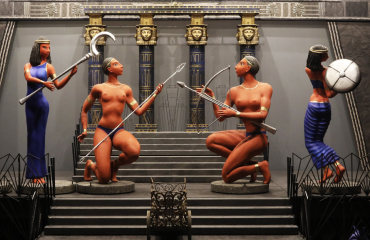Erarta Museum presents meditative experiments with analogue photography by the American photographer Peter Miller
Peter Miller on his art:
As our natural surroundings recede into the background of the proliferating electronic clutter of our times, natural forms take on the flavor of the exotic. Forests, rivers, mountains are now like a foreign country that we visit but no longer inhabit. These wild places are known, if at all, like nearly everything else — virtually. Continents move, ocean currents swirl, clouds hover above all — but always at a distance. Re-discovering foreign lands, seas, and skies renews the wonder and awe of creation […].
Natural surroundings and the art they inspire enliven our inner lives and sharpen our perceptions. Just as the moods of trees and mountains and oceans vary from moment to moment, so do our own moods. This present moment — of calm or turmoil, joy or sadness, exhilaration or torpor — always has some counterpart in nature. Images that light that spark of recognition are what art is all about. Hidden, obscure, widely separated in time and space, or right here in plain sight, the graphic arts transform that experience into something viscerally recognizable, through composition, form, tonal variations, depth, and texture.
Chance having a central role in artistic creation means that it is best done with a purpose-free mind. The less we know — and we really know very little – the more mysterious a phenomenon appears, the more expansive its possibilities. My empty-minded way of creating art, initiated by the light-and-shadow of what attracts me at the moment, visualized in the field as ink-on-paper, laboriously transferred to a copperplate where the vagaries of etching and printing further influence the image, is the 'method' I pursue. Only by freeing the mind from any purpose (documentary, commercial, educational, political) whatsoever is it possible to create something memorable.
Such visions exist outside of time and place — 'sub specie aeternitatis' — a phrase historically associated with scientific truth, but equally applicable to visionary truth that carries the undeniable conviction of the moment, such that it stops time, catching it in the very act of passage. Awareness of these moments comes from the flow of sense-experience when immersed in nature or in solitary pursuits free of distraction. Those momentary, fleeting, evanescent responses to our surroundings transcend our everyday existence, and if we allow them to, evolve into ecstatic realization of the grand scheme of things […].
As personal experience of nature atrophies, so does the ability to learn from sense-experience and act accordingly. Yet these abilities are indelible parts of human nature; though quiescent they never quite disappear.
Art helps us cultivate them, appreciate the flow of time as it happens, merge memory and futurity in this moment, and thus find something to enjoy even in difficult circumstances. The experience of nature, the spontaneous insight, and the all-in 'at-a-glance' quality of graphic art, all three of these evoke instantaneous recognition. How this happens is a mystery, and it cannot be forced or planned other than to cultivate awareness. Such confluences of nature, art, and thought occur in music, meditation, pattern recognition, intuition, scientific discovery and other spontaneous thoughtways.
These experiences are also, surprisingly, the source of conventional reality, for, as Chuang Tzu put it long ago, 'The Tao unveils itself along the way; things become what they are as we notice them'. Imagine, if you will, all the things you see conjured into existence by your regard. With art, that power of creative observation is yours.
About the photogravure etching technique:
Photogravure etching belongs to the 600-year intaglio tradition, one of the most exquisite, tactile, and expressive forms of the graphic arts. The technique developed over that long span of art history provides a uniquely three-dimensional presence, combining the spontaneity of the moment with the labor-intensive practice of engraving. Compositions emerging from ink impressed into etching paper with an etched copperplate enter directly into the viewer's perception and memory. Upon seeing the original 19th-century photogravures in 1991, I realized this technique was what I had been searching for, and I am still exploring its possibilities today.









